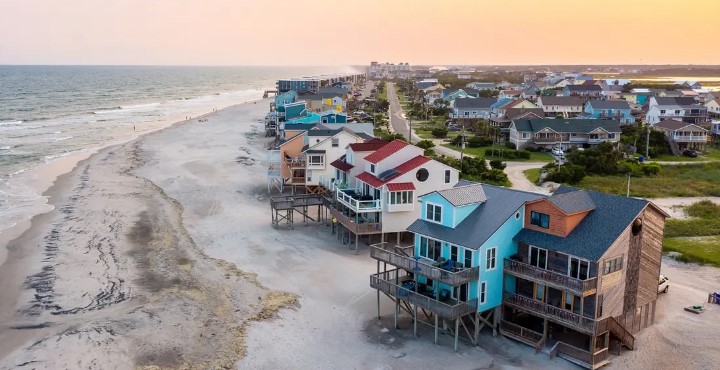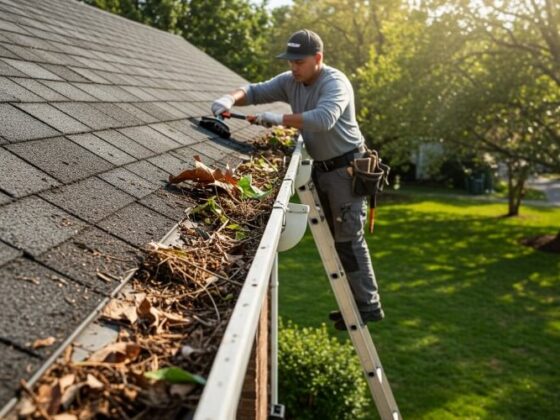Buying your first home near a beach sounds like a dream, right? Ocean breezes, sandy strolls, and colorful boardwalks just steps away. But if you’re a first-time buyer eyeing property near a tourist-friendly beach, there are some real things you need to know—beyond the view.
Beach towns are different animals in the real estate world. Prices, regulations, and even neighbors can change with the season. Whether you’re thinking long-term residence, vacation home, or investment property, this guide will walk you through what really matters when buying in a coastal market.
Key Highlights
- Understand how seasonality and tourism affect property value and lifestyle
- Know which local laws and zoning regulations impact beachside homes
- Learn what to budget for when buying near the water
- Find out why location within a beach town really matters
- Discover what beach buyers often overlook
- Tips for making smarter offers in competitive beach markets
Understand How Seasonal Demand Affects Property Life and Price

Beach towns can feel like two different places depending on the season. That’s a big deal when you’re investing for the first time. In summer, these neighborhoods buzz with short-term renters, surfers, tourists, and local events. In winter? It could quiet down to a crawl.
This change affects property values, rental income potential, and even how you live day to day. If you plan to live there year-round, you’ll want to experience the area in its off-season before committing. The charming beach strip might be great in July—but nearly empty in January.
Also, homes near the beach tend to carry a “tourist tax” in the pricing. That means you’re often paying more for proximity, even if the property itself needs upgrades or isn’t in a quiet pocket. Pay attention to how often the area gets rented out and how nearby tourism affects things like noise, traffic, and maintenance needs.
Think About What You’re Really Buying—And Where
Not all beach areas are created equal. Being “near the beach” can mean anything from direct oceanfront to a 10-minute drive inland. Each of these comes with different price tags and trade-offs.
Homes within a block or two of the sand tend to have higher insurance costs, more wear-and-tear from sea air, and strict building codes. Further inland—still close enough to enjoy beach life—you might get more space, better parking, and fewer seasonal crowds.
If you’re selling a home to fund your beach purchase, or want a smoother transition into the market, there are services that can streamline the process. For example, if you’re asking, “How can I get a cash offer for my house Chula Vista?” some buyers will give quick, fair offers with no hassle. One such option is GordonBuysHomes.
Zoning, Short-Term Rentals, and Local Rules Matter More Than You Think

This is where many first-time beach buyers get caught off guard. Coastal areas often have very specific—and sometimes confusing—zoning laws. These can determine everything from whether you can rent your home as an Airbnb to what kind of renovations are allowed.
Before you fall in love with a listing, check city and county regulations on short-term rentals. Some communities limit them or require permits. Others ban them entirely.
Also look into:
- Coastal Commission guidelines (especially in California)
- Flood zone and FEMA map placement
- HOA restrictions, if applicable
- Building height or design limitations
Don’t just assume your future plans will be allowed. Confirm them early.
Maintenance and Insurance Will Be Higher—Plan for It
Beach homes take a beating. Salt air, moisture, and heavy foot traffic from guests (or sand-loving pets) can wear down a property faster than an inland home.
You’ll want to budget more for:
- HVAC system maintenance
- Roof and siding care
- Pest control (especially termites in wood-framed beach homes)
- Window and deck repairs
Home insurance also tends to be more expensive near the coast. Flood insurance may be required, and coverage limits or exclusions vary depending on location. Get quotes before closing—you don’t want to find out your dream beach cottage comes with double the monthly premium you expected.
Look Beyond the View—Evaluate the Neighborhood
A house might have a great balcony or beach access, but what about the area itself? As a first-time buyer, lifestyle quality matters just as much as price or features.
Walk the neighborhood during the day and at night. Ask these questions:
- Is parking consistently available?
- Do seasonal crowds flood the streets or keep it walkable?
- Are there grocery stores, schools, or essential services nearby?
- What’s the local noise level like during peak months?
Locals often know which streets are “sleeper spots” with less foot traffic but great access. Spend time learning from them. Talk to neighbors if possible. Look into community Facebook groups or neighborhood forums—they can tell you a lot.
Be Smart With Your Offer in Competitive Beach Markets

Tourist-friendly beach areas—especially in Southern California—are competitive. First-time buyers often get discouraged when they lose out to all-cash investors or out-of-town second-home buyers.
Here are a few ways to strengthen your offer:
- Get fully underwritten pre-approval (not just pre-qualified)
- Consider a larger earnest money deposit
- Be flexible on closing time if possible
- Write a clear, clean offer without unnecessary contingencies
You don’t need to overpay, but you do need to move quickly and strategically. A local real estate agent who understands the coastal market is invaluable here—they’ll help you spot overpriced listings and avoid homes with hidden issues.
Know When It’s Worth the Premium
Beach homes will almost always cost more than their inland counterparts. But in many cases, the long-term value holds strong—especially in well-loved, low-inventory beach towns.
The key is to buy smart: prioritize location within the town, be aware of seasonal income potential (if you’re renting), and be realistic about maintenance. If you plan to live there full-time, make sure the community feels like a fit year-round—not just in peak season.
A well-chosen home near a popular beach can offer the best of both worlds: everyday relaxation and strong resale value when you’re ready for your next move.
Final Thoughts
Investing near a tourist-friendly beach as a first-time buyer can be incredibly rewarding—but it’s not without its challenges. By doing your homework, walking neighborhoods, and getting the right support, you can sidestep common pitfalls and find a home that’s more than just scenic—it’s smart, too.
Whether you’re drawn to the surf, sunsets, or small-town charm of beach living, knowing what to look for makes all the difference. Stay grounded in facts, trust your instincts, and don’t rush the process. The coast isn’t going anywhere—but the right listing might.



